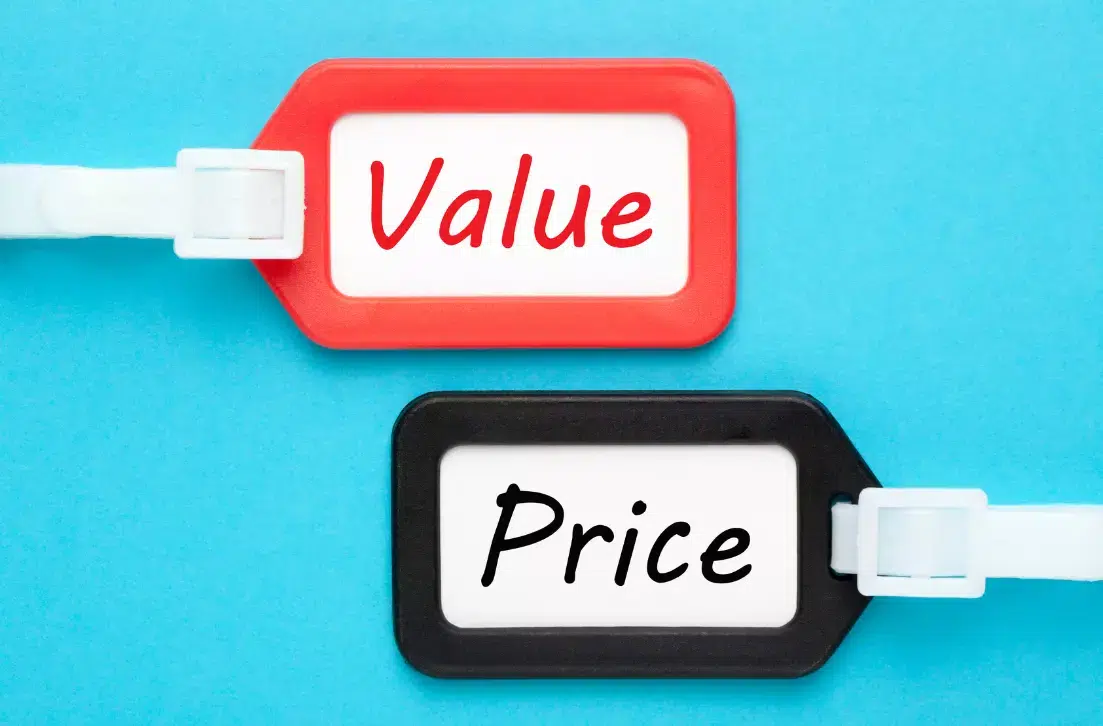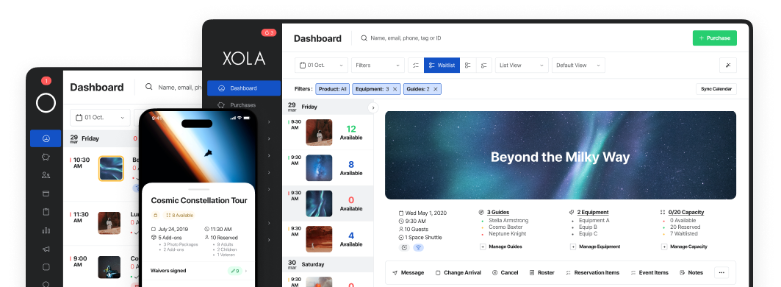
If you run a tour or attraction business in a seasonal market, then you know how hard it can be to remain profitable during your low season. That’s where demand pricing can come in.
Demand pricing allows tour operators and attractions to set prices based on relative guest demand. As demand for an experience or product changes, so does the perceived value of that service or product. With this pricing strategy, you can adjust your pricing to ensure your company makes money year-round.
In this post, you’ll learn how to use demand-based pricing to maximize profits, even during your slowest season.
- What is demand-based pricing?
- Demand-based pricing vs. dynamic pricing: What’s the difference?
- How does demand-based pricing work?
- When to use demand-based pricing
- When to not use demand-based pricing
- 5 examples of demand-based pricing for travel and tourism brands
What is demand-based pricing?
Demand-based pricing, also known as demand pricing, is a pricing strategy in which the price of a tour or activity changes based on customer demand. In other words, an operator increases the price increase when demand is high and decreases it when demand is low.
This means that the price of a product or service is not fixed, but rather can vary significantly over time, depending on the level of demand for it. It’s a pricing strategy commonly used in the tourism industry, where demand fluctuates significantly from high to low seasons.
For example, airlines typically charge higher prices on holidays like Christmas when they know it will be at its highest. Airlines know that many travelers are willing to pay the higher price to see their families during the holidays.
Prices subsequently drop when demand decreases. Then, airlines will offer cheap flight discounts to encourage price sensitive travelers to purchase flights during the low season.
Demand-based pricing vs. dynamic pricing: What’s the difference?
With demand-based pricing, an operator prices their tours or activities based on how much customer demand exists at a given time. For example, a ski lesson will be more expensive over the holidays than at the end of the season.
Dynamic pricing, on the other hand, is a pricing strategy that involves regularly adjusting the price in response to changes in demand, competition, or other market conditions. This means that prices can fluctuate over time based on the current market conditions.
For instance, Uber charges surge pricing at peak times. When Uber notices that demand is exceptionally high — which could be due to bad weather or a big event like a music festival — your ride will be quoted at a higher price than usual.
How does demand-based pricing work?
Demand-based pricing helps operators maximize revenue during high and low seasons. To capitalize on the high season, tour operators will charge higher prices. Then, operators can incentivize more bookings during the slow season by decreasing prices.
There are three different approaches to demand-based pricing:
- Price skimming: Operators charge the highest price of a product that customers are willing to buy and then gradually scale the price down. Apple often does this with the iPhone. When a new model launches, it’ll be priced quite high. Once competitors like Samsung launch rival products, Apple scales its prices down to remain competitive.
- Penetration pricing: Operators undercut the value of a new tour and set low prices to attract new customers. That way, the operator generates buzz around the new tour right away. Banks often do this to attract new customers. You’ve probably seen them offer a “free checking” account or a similar offer for a limited amount of time. The idea is to attract the customer with a discounted service or product and provide so much value that they stick around long-term.
- Value-based pricing: Operators price a tour based on how much customers think it’s worth. For example, Starbucks knows it has a loyal customer base. For its loyal customers, the perceived value of a Starbucks drink is far greater than the actual price of the coffee. They love the experience of walking into a cafe, ordering their favorite drink, and lingering around long after they’re done. As a result, Starbucks is able to charge a premium for its drinks.
- Yield management: This demand pricing method adjusts prices based on current consumer demand levels and other factors. Airlines are a classic example. They understand that a seat on a flight becomes more valuable as the plane fills up and the departure date approaches (i.e. price elasticity). By analyzing data like booking patterns and passenger behavior, airlines can dynamically adjust ticket prices. This means a seat on the same flight might have different prices at different times, reflecting its changing value in the eyes of customers as they weigh factors like urgency, convenience, and availability. This strategy allows airlines to maximize revenue from each flight.
- Geo-based pricing: This strategy involves setting initial prices based on the geographical location of the customer. Retail giants like Amazon use this approach to tailor prices according to local market conditions and consumer purchasing power. For instance, a product might be priced higher in an affluent urban area compared to a rural setting, reflecting the varying economic landscapes and consumer willingness to pay. This method allows businesses to optimize their pricing strategy across different market segments, ensuring they have a competitive edge and remain relevant.
When to use a demand-based pricing strategy
Operators often change the price of their tours on a seasonal basis. If you have low and high seasons, demand-based pricing is a great way to capitalize on these fluctuations of demand.
During the holidays, for example, operators can price up their tours since demand is unusually high. The opposite should be done in the low season to encourage guests to book at lower prices. For example, you might charge $50 for a tour during shoulder season and bump the price up to $80 during peak season.
Demand pricing is also a great way to boost profitability in low-competition environments. If your company offers unique tours that customers can’t find elsewhere, they’ll be more willing to pay a higher price for them.
In addition, you might want to use demand-based pricing in a high inflation environment to generate bookings, especially when consumer spending power is under pressure. By dynamically adjusting prices in response to real-time market trends, you can attract price-sensitive customers in periods of low demand. This initial demand not only helps in maintaining sales volumes but also ensures that the business remains competitive and relevant in a challenging economic climate.
Lastly, you might also want to leverage this strategy as a way to fill gaps in your tours. With Xola’s Lightning Deals, for example, operators can offer last-minute discounted offers to book their tours at max capacity.
Here are a few more scenarios in which demand-based pricing might make sense:
- Airline ticket prices increase during peak travel season, such as Christmas and New Year’s holidays.
- Hotel room prices will increase during popular events or festivals, such as Mardi Gras in New Orleans.
- Ride-sharing apps leverage surge pricing during rush hour or major events like a big sports game.
- Seasonal pricing of amusement parks, where prices typically increase during peak summer months. Disney World, for example, hikes up prices around holidays, including Christmas, New Years, and Easter.
- Ski lift tickets will increase during peak winter season or holidays.
- Vacation rentals are a lot pricier during holidays, especially beach homes or cabins in popular vacation spots.
- The pricing of sporting events will change depending on the popularity of the teams playing or the importance of the game.
When to not use demand-based pricing
While demand-based pricing can be an effective way to maximize profits, it is not always the best pricing strategy for every tour business.
If your company has high fixed costs, you might not be able to lower your prices during the low season without incurring losses. Also, if you operate in a highly competitive market, other tour companies could undercut the price if you set yours too high.
Demand pricing might also not be the best idea for businesses that already have a strong following. A big brand like Disney, for instance, can charge a premium price even during low season.
That being said, there are some disadvantages to using demand-based pricing:
- It’s labor-intensive. This pricing strategy requires a lot of research and an in-depth understanding of your market. Operators need to spend time and money to accurately identify their low and high seasons. They will also need to closely monitor how their customers react to changes in pricing.
- If demand is volatile, this strategy can backfire. Let’s say you raise your prices ahead of your high season, and an external factor like weather dampens demand. Without the expected demand, the premium pricing won’t make much sense.
- The success of your pricing strategy may be impacted by your competitors. For example, if you lower your prices, your competitors might make their prices even lower. While you’ll likely lose customers to those competitors, the real problem here is that the extremely low prices can impact the perceived quality of your tours. And when it’s time to push prices back up, your customers might turn away.
- You risk pushing away long-time customers who are accustomed to paying a specific price for your tours.
- If you execute customer-based pricing poorly, you could be accused of price discrimination. In the worst case scenario, you risk pushing away long-time customers who are accustomed to paying a specific price for your tours. And now they won’t because of the inflated price.
- If you raise your prices and you don’t always raise guest experience levels, you could see a big drop in customer satisfaction levels and more negative reviews on OTAs.
- It might not work for package deals. If you have a tour with a food and beverage offering or transportation included, you’ve likely chosen a set price for that bundle of services.
5 examples of demand-based pricing for travel and tourism brands
Let’s take a look at how travel brands of all kinds apply demand pricing in real life.
1. Airline industry
Airlines offer one of the most prominent examples of demand pricing. Flight prices fluctuate based on the popularity of each destination and their respective peak seasons. For example, when you search for flights from Miami to NYC, which is a top New Year’s destination, you’ll find that tickets are significantly more expensive during the holiday than later in the month. In February, prices drop across the board.
2. Disney World
Disney uses demand-based pricing for its theme park ticket sales. As you can see in the example above, the theme park operator labels the different pricing tiers as “value,” “regular,” and “peak” seasons. Price-sensitive customers can choose to visit during the week when many days fall under the cheaper “value” category. Meanwhile, peak days like January 16 — Martin Luther King Jr. Day — are priced at a premium.
3. Intrepid’s Vacation Packages
Intrepid Travel prices its tours based on the high and low seasons of each destination. As you can see in the example above, the tour operator notifies customers when they can find the lowest-priced tours. In the “Morocco Uncovered” trip, the lowest price is available on January 11. In March, however, the price rose nearly 25%.
4. Vacation rentals hike up prices during holidays
Vacation rentals in popular vacation spots are often more expensive during holidays and peak travel season. For example, Lake Tahoe, California, is a popular destination for the Fourth of July holiday. During this time, homes are priced between $410 and $625 per night because the homeowners know that demand will be high during those dates. The owners likely decrease the prices during the low season
5. NYC hotels during the New Year’s holiday
New York City is one of the top U.S. destinations for New Year’s Eve. One million people flock to Times Square to watch the famous New Year’s Eve Ball drop every year. As you can see from the Google search above, NYC hotel prices hit an all-time high during that time period. The Four Points by Sheraton boosts its nightly rate to $588 on Dec. 30th and 31st and drops it to $139 on Jan. 3rd.
Demand pricing is a strategic way for tour operators to maximize profits while riding seasonal shifts. Businesses can charge higher prices when demand increases and lower prices when demand decreases. While it’s not a one-size-fits-all solution, demand pricing can be a useful tool for tour businesses like yours.





